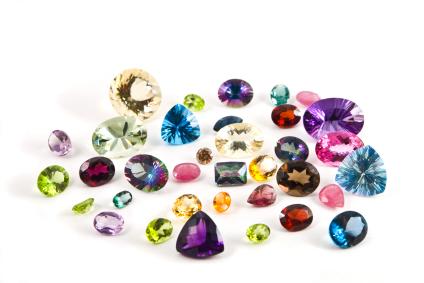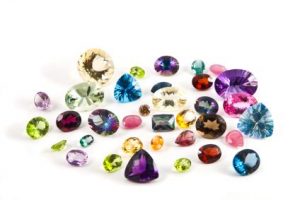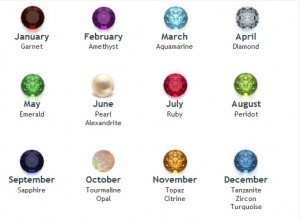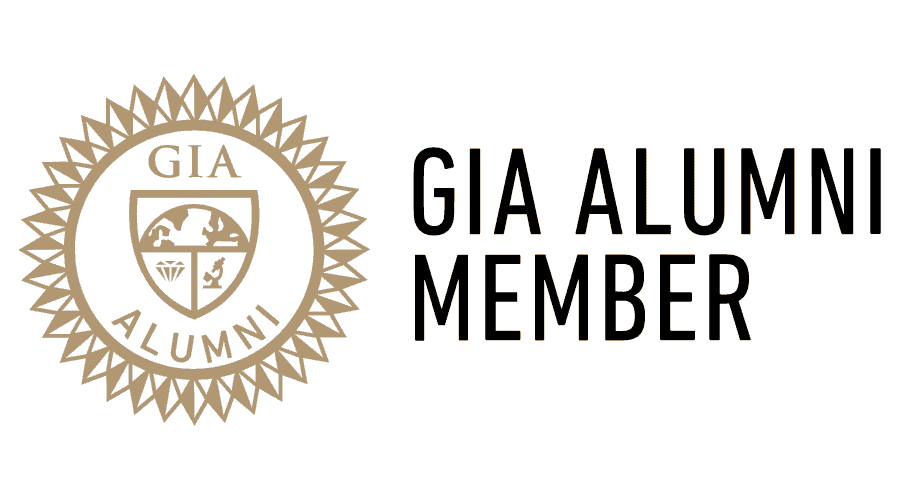The basic human need to own and wear materials we consider special is what drives us to collect rocks and minerals. Perhaps this explains the lure of birthstones. How powerful it is to have our month of birth represented by a beautiful natural gemstone. We can own and display our special stone and feel embraced by its beauty.
“Supernatural powers have long been attributed by astrologers to certain gemstones. Wearing the gem associated with one’s birthday is commonly thought to bring good luck or health.”
All birthstones are minerals, but ever wonder why some minerals are considered gems? Interestingly, there is no geological definition for the word gem, because a gem is a human creation. Minerals are formed by geologic processes in rocks in their natural environment. When we excavate precious or semiprecious stones, cut, and polish them into specific shapes, they become gems. When a gem is set into metal to be worn on the body it becomes a jewel. Several key factors determine the value of a gem: To be considered worthy of jewelry, the mineral must have rarity, durability, attractiveness, size, and color.
‘Some minerals are gems and some gems are minerals, but not all minerals are gems nor are all gems minerals’
Some of the popular “precious” gems such as diamond, ruby, emerald, and sapphire are minerals, too, because they are inorganic and naturally formed. Some other gems such as amber, pearl, and coral are not minerals due to their organic origin. Many minerals are not gems because they lack the esthetic appeal that a gem requires. Most minerals are, in fact, fairly plain as far as visual attractiveness. Other minerals do not have the stability or ruggedness to remain intact very long in jewelry. Buy this has not stopped some attractive but fragile minerals from being fashioned into cut gems as a novelty.
‘To be a gem, an object must display an inherent attractiveness (color, sparkle, or other optical property) and must be able to withstand the physical abuse that frequently accompanies treatment as a gem or piece of jewelry.’
The first association of a special gem with each month was recorded in the Bible, in Exodus 28 and 39. An original breastplate of the High Priest of the Hebrews was said to be made by Moses in 1250 BC, according to instructions he received during 40 days in the mountains. The 12 gems in the breastplate were later linked with the signs of the zodiac, and later still associated with the months in the year.
There are numerous legends and myths about birthstone healing powers and their therapeutic influence. According to these legends, wearing a gemstone during its assigned month heightened its healing powers.
January: Garnet (Strength, perseverance, prosperity, health)
February: Amethyst (Wisdom, spirituality, sobriety, security)
March: Aquamarine (Courage, creativity, health, perception, hope)
April: Diamond (Invincibility, clarity, purity, eternal love)
May: Emerald (Patience, understanding, foresight)
June: Pearl (Modesty, purity, beauty, happiness), Alexandrite
also, Moonstone (Balance, confidence, joy, tender passion)
July: Ruby (Love, success, integrity, passion & promise)
August: Peridot (Fame, dignity, protection, success)
September: Sapphire (Truth, sincerity, commitment, loyalty)
October: Opal (Hope, faith, confidence) & Tourmaline (Balance, endurance, safety)
November: Topaz (Strength, wisdom, courage) & Citrine (Hope, cheerfulness, health, fidelity)
December: Tanzanite, Zircon (Success, love, prosperity), Turquoise (happiness, peace, patience)





